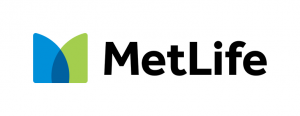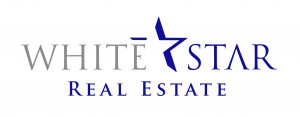
Real Estate market overview and outlook
Office, Retail, Industrial, Investment & Residential markets overview and outlook.
During AmCham's annual Real Estate Market Outlook, held on March 7, Richard Curran of CBRE, Miroslav Barnáš of JLL and Petr Hána of Deloitte came together to discuss current real estate topics, as well as to answer questions such as: How can you use real estate to create competitive advantage for your business? What is the current state of the real estate market in Prague and in the Czech Republic, and what are its threats and opportunities? Read further to find out.
Czech Office Market
Vacancy rate
In 2016, the vacancy rate was at relatively heathy 10% in Prague's office market, with further slight decline expected in 2017. However, there are significant differences in vacancy rates between Prague’s main office locations. Office location hub with lowest vacancy rate of ca. 6% is Dejvice- Evropská, while Holešovice struggles with ca. 16%. Main reasons for underperformance of Holešovice are following: (i) not the whole part of the city district is well connected to metro; (ii) a lack of services (restaurants, major shopping center, etc.) Despite of this fact, CBRE considers Holešovice to be a location with huge potential for growth.
Capital city vs. regions
Majority of office buildings are located in Prague. However, office building’s market in Brno is also rapidly expanding due to IT companies. On the other hand, Ostrava still has recover from decline in demand for office premises a currently has vacancy rate (20%), which is much higher than Krakow only 150 km away. Main reason is structure of workforce available in those cities. Krakow has high a supply of qualified labor force that creates positive environment for establishing of Shared Service Centers of global companies, while Ostrava is still rather known for its heavy-industry companies.
Sector-wise, most of the demand for office premises in 2016 came from IT and Pharma industry., which is significant shift from previous years when demand was driven mainly by banking and finance tenants.
Outlook
CBRE expects a strong demand for office buildings to continue also in 2017 with a slight of both prime rent and average headline rents, however, the market will be still considered as tenants’ market and amount of fit-out contributions and length rent-free periods offered by landlords is also expected to remain stable.
Czech Retail Market
Further Retail Market growth expected in 2017. Read more about it here.
To read more about the future development of shopping centers click here.
Czech Industrial Market
The Czech Republic - attractive for investors?
The Czech Republic has over 6 million sqm of modern industrial space and is one of the most mature markets in CEE. The industrial market will remain highly attractive for investors, developers and occupiers who are capitalizing on the country's location in the center of Europe, with its affordable and skilled labor and benefiting from its industrial tradition and stable economic environment. The Czech industrial market offers three well established regions of Prague, Pilsen and Brno, in size order. In addition, there are other smaller regions and some emerging locations such as the Ústí nad Labem region for example whose future development is linked to the recent completion of the D8 highway (at the end of 2016).
Demand
Due to solid domestic demand from Czech households, we expect strong demand from the e-commerce, retail, and 3PL sectors to continue in 2017. Manufacturing will remain a significant part of the demand but, due to labor shortages, it will face difficulties in some highly attractive regions with lower unemployment rates. Historically, low vacancy rates will further encourage developers to undertake speculative construction, subject to land availability, particularly in regions recording constantly high demand. Looking further ahead, we believe some of the issues of laboor availability will be mitigated by the increased usage of automation in both logistics and manufacturing.
Czech Investment Market
Transactional and investment volume
For 2017, we expect a robust transactional volume supported by a strong first half of the year. A significant pipeline of transactions across sectors remains, specifically retail, held over from 2016. In addition, the continued positive outlook in the financing environment provides us with confidence that we will witness solid transactional activity although this may be limited by a scarcity of product for investors. After the record breaking investment volume of Ä3.6 billion achieved in 2016, this year's volumes are expected to exceed Ä2.0 billion.
Which type of investors often invest in Czech economy?
The Czech market attracts interest from a wide range of investors in terms of their origin and type. The German institutional investors have historically been key to our market's liquidity. Today there is a well-balanced composition of investors, including those representing domestic capital, whose role has significantly increased in the last few years. Last year saw the first major acquisitions by Chinese investor - CEFC, Singaporean sovereign wealth fund - GIC Real Estate and South African funds - NEPI and Rockcastle GRE. Our views on prime yields are as follows: industrial and logistics is at 6.00% with further compression anticipated, prime retail (shopping centres) are at 5.00% with a significant premium for trophy assets, offices are at 4.85% and high street assets, some way below 4%.
Czech Residential Market
Czech economy sets good conditions for the residential Real Estate. Developers are willing to buy new land and build, buyers are willing to buy and invest. But the restrictions from the law create obstacles and cause the fact that to build a house takes 5-7 years now.
Read more in an interview with Petr Hána here.
To download complete presentations from the annual AmCham´s Real Estate market overview, click here.
Log In




